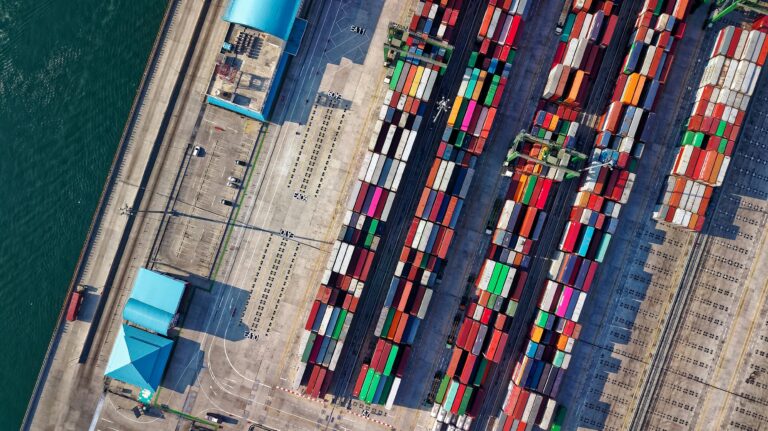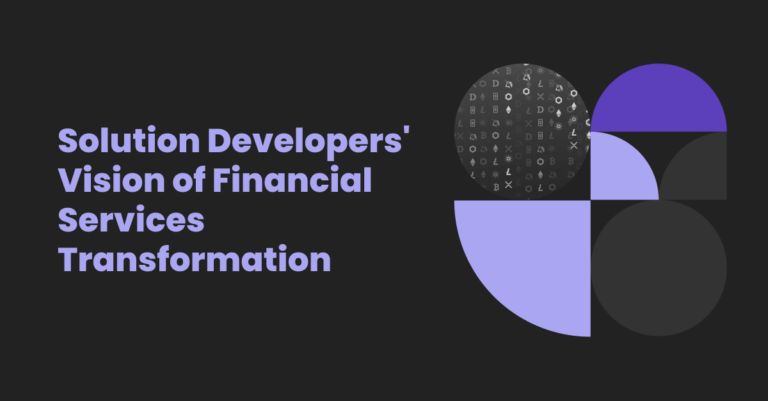As we enter the second half of 2021, it is the right time to get better acquainted with web app development trends coming to us in the near future.
Software development sometimes changes faster than programmers and business owners manage to keep up with these innovations, which is why everyone involved in this world must be constantly informed about all the news in the industry.
We will first answer the question of why. Why would you even want to turn your website into a web application? What does that mean? How are such applications different from mobile applications? Why do they say they are the future of the Internet? And finally, what are the steps of modern web application development?
What Is a Modern Web Application?

Modern web apps load like regular web pages but provide additional functionality, such as working offline and notifications, as standard applications for Android or iOS. These applications are the future of using the Internet on mobile devices, and many are switching to modern web application development.
They are primarily intended for use on mobile devices but also on desktop computers. They represent a revolutionary solution to improve the user experience in the use of mobile devices. Modern apps are not a new framework but an extension of existing web technology.
They are popular applications because they:
- Work everywhere, in any browser
- Adapt to each type of device and each screen size
- Also work offline, which means they are independent of the connection
- Are easy to download and install
- Are updated automatically
- Are “searchable,” meaning that they are identified as websites during a search
- To ensure the maximum degree of security at work, they must use the HTTPS protocol (Hypertext Transfer Protocol Secure), which is a combination of Hypertext Transfer Protocol with SSL / TSL protocol.
Modern web application development was initially used by Google for its Chrome browser, and later other browsers were included.
Their database consists of service scripts written in JavaScript, which act as an intermediary between the application and the Internet. These scripts allow data to be cached on the device, making it available when the internet connection is weak or when the user is offline.
Modern web applications are based on HTML, CSS, and JavaScript. Creating a responsive (automatically adaptable to all devices) website, creating a JSON manifest, a file that should give browsers instructions on how to run the application and its operation, and setting up a service script are the basic steps in creating a functional app.
Modern web applications and standard mobile applications differ primarily in that MWAs are created independently of the operating system, and mobile applications are created specifically for Android, for iOS using iphone app development services, or other mobile operating systems. The cost of creating this kind of app is significantly lower than the cost of creating an original mobile application. Modern web application development can cost up to ten times less than mobile applications.
With a modern app, everything is extremely fast – from the moment the application is downloaded to the moment it starts to be used. Even when the user is not connected to the Internet, they can restart the application thanks to data caching. They are reliable even when the user does not have internet access.
Converting the mobile version of the site to a modern app can help improve results in education, e-commerce, media, publishing, and other areas. These applications increase site traffic, as well as the length of stay on the website.
Differences Between a Web App and a Website
Modern web applications are a concept that comes straight from Google’s workshop. On its official website, Google for modern web applications says that modern offline web applications are designed primarily for mobile devices, which can be compared to the best native applications.
In other words, having an MWA page actually means having a regular website that provides the user with the feeling of using the “traditional” applications – which we are used to having on the home screen of our mobile phones.
Modern web application development represents a new era of website application development, which complements the hitherto extremely popular concept of responsive web design (RWD). Responsive websites have raised the level of expectations of mobile and tablet users. In addition to the absolute customization of each screen size, users are accustomed to “not feel” the difference between searching on mobile and desktop devices and keep their search habits from their smartphone.
The web application development of native mobile applications followed as a natural response to the needs of smartphone users. The increase in mCommerce consumption, better search experience, the ability to communicate via “push notifications,” higher speed, and better responsiveness clearly showed the “seriousness” and strength of the eCommerce strategy.
But a responsive website is not the same as a mobile app, while the development of a native mobile app still requires quite a high investment by the website owner. In addition to the need to include a dedicated team of web application developers in the cost, it is also necessary to take into account that this application must be adapted to different platforms, their versions, and different devices.
In this story, however, Google recognizes the need to develop a product that is the perfect hybrid between a native app and the mobile web – and that’s exactly what modern web application represents.
Examples of Web-Applications Around Us
Here’s a brief summary: Google, Microsoft, Mozilla, and other companies are working on a new, modern standard for web applications. Even Apple monitors and implements support for it. These apps are web apps, but they behave more like native apps.
Like existing top web apps, they will be hosted directly on their linked site. Developers can update them directly on their web server without sending those updates to several different app stores, and the same app will work on all browsers and platforms.
The practice has shown that modern web app development can especially help companies in the field of:
- E-commerce
- Media and publishing
- Education
- Tourism and catering
You can literally turn any type of web application into MWA.
In other words, if you have an online store, switching from the mobile version of the site to a modern web application could pay off many times over. You will provide users with a better experience, the site will be faster and more efficient, payment will be secure, and the complete earnings will go to you, which is not the case if you have a mobile application that you charge for.
Why do we say that? Because the fact that Google and Apple take a percentage of every transaction made on their mobile app retailers (sometimes up to 30%) is often overlooked. With MWA, however, you don’t have to think about it.
On the other hand, if you run an online store or news portal and publish many articles every day, a modern web application could be an ideal solution for you and your users.
Web-Specific Application Traits
Some of the main tests performed during the process of website application development are:
Usability Testing
For an application to be effective, user interfaces need to comply with standards. Usability testing alters the characteristics of user interactions and the application itself and identifies weaknesses. And as such, the usability test is crucial in the designed application.
Functionality Testing
The functionality test ensures the communication of certain functions with each other, according to the requirements of the application. In a web application, the starting point for functional testing can be the relationship between changes to the data in the application and the database. Some of the functional tests include database testing, configuration testing, compatibility testing, and data flow testing.
Interface Testing
To ensure that individual components of a web application are properly connected, i.e., that the communication between them is correct, we conduct a test of the interface. It is necessary to test the compatibility of the server with the program, hardware, network, and database.
It should be checked that all interactions between these servers are carried out and that errors are handled correctly. If an error occurs for any query, the application should display the error messages accordingly. The main task is to ensure that interfaces that are extensible and exposed to components, in general, should be able to adapt to change while remaining compatible.
Performance Testing
it is a type of testing that ensures that the application works well under unexpected load. The goal is not to find errors, but to eliminate limitations in terms of response time, reliability, scalability, and resource usage.
How Are Web Applications Created?

A modern web application development lifecycle is a framework that defines the steps involved in software development at each stage. It includes a detailed plan for creating, setting up, and maintaining the software. It defines all tasks involved in the planning, creation, testing, and implementation of a software product.
Adherence to this process leads to software development in a systematic and disciplined manner. The purpose is to deliver a high-quality product that is as per the requirement of the customer.
This is how to develop a web application:
-
- Collection and Analysis
During this phase, all relevant information for web application development is collected from the customer according to their expectations. All ambiguities must be resolved only at this stage.
The business analyst and project manager have scheduled a meeting with the customer to gather all the information like what the customer wants to build, who the end-user will be, and what the purpose of the product is. A thorough understanding or knowledge of the product is very important before making a product.
Once the requirements collection is done, an analysis is performed to check the feasibility of web application development. In case of any ambiguity, a call for further discussion is established.
-
- Design
At this stage, the request is used as input, and software architecture is derived that is used to implement the system development.
-
- Implementation
Coding begins after the programmer receives the project document. The software design has been translated into source code. All software components are implemented at this stage.
-
- Testing
Testing begins after the coding is completed and the module is released for testing. At this stage, the developed software is thoroughly examined, and all found shortcomings are assigned to the developers to solve them.
-
- Deployment
After the product is tested, it is first used in a production environment (customer acceptance testing) is performed depending on customer expectations.
- Maintenance
After placing the product in the production environment, the developers will take care of the maintenance of the product, i.e., If any problem occurs that needs to be fixed or if any improvement needs to be made.
What Does the Future Look Like?
Modern web applications are the future of using the Internet on mobile devices. As an innovative way to apply web technologies, they turn ordinary web pages into fast, reliable, and always available solutions, thus raising the user experience to a higher level.
Given that current and future users of digital products should always be the center of attention when designing websites and online stores, Modern web application development can greatly improve the online business of many companies.
If you want to improve your business by switching to MWA, do not hesitate to hire a dedicated development team that will create a modern web application for your company and help you step into the future.
















